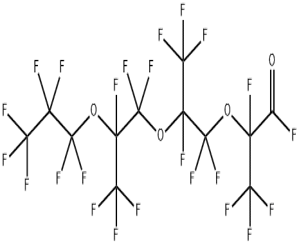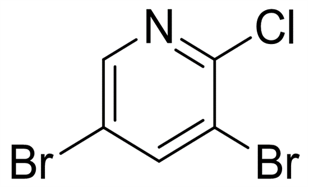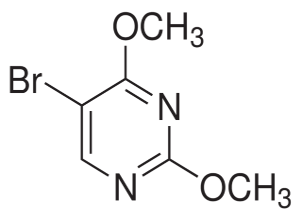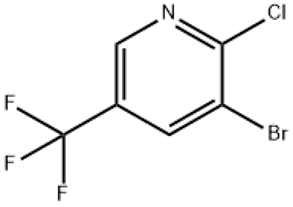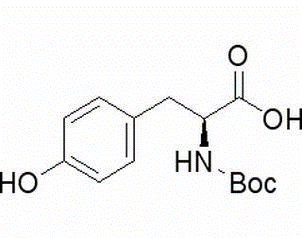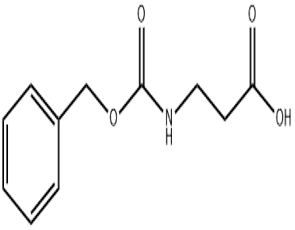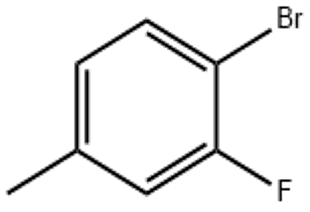Perfluoro(2 5 8-trimethyl-3 6 9-trioxadodecanoyl)fluoride(CAS# 27639-98-1)
| Hazard Symbols | C – Corrosive |
| Risk Codes | 34 – Causes burns |
| Safety Description | S26 – In case of contact with eyes, rinse immediately with plenty of water and seek medical advice. S36/37/39 – Wear suitable protective clothing, gloves and eye/face protection. S45 – In case of accident or if you feel unwell, seek medical advice immediately (show the label whenever possible.) |
| UN IDs | 3265 |
| TSCA | T |
| Hazard Note | Corrosive |
| Hazard Class | 8 |
| Packing Group | II |
Introduction
Perfluoro-2,5,8-trimethyl-3,6,9-trioxadocyl fluoride is an organic compound. The following is an introduction to its properties, uses, manufacturing methods and safety information:
Quality:
- Perfluoro-2,5,8-trimethyl-3,6,9-trioxadocyl fluoride is a colorless and odorless liquid.
- It is highly chemically stable and can be used in a wide range of temperatures and chemical environments.
- It is a non-volatile compound, less flammable, and also has lower toxicity.
Use:
- Perfluoro-2,5,8-trimethyl-3,6,9-trioxadododecadecyl fluoride is widely used in industrial applications involving lubrication, sealing, thermal insulation, and electrical insulation.
- It can be used as a high-temperature lubricant, sealant, and preservative, for example in the aerospace, electronics, and automotive industries.
- It can also be used as an electrical insulating agent for the preparation of insulating materials.
Method:
- Perfluoro-2,5,8-trimethyl-3,6,9-trioxadodroyl fluoride is prepared by chemical synthesis.
- The specific preparation process usually involves the reaction of fluorosulfonates, as well as further fluorination and oxidation reactions.
Safety Information:
- Perfluoro-2,5,8-trimethyl-3,6,9-trioxadocyl fluoride is generally considered a relatively safe compound.
- During operation and use, the relevant safety operating procedures should be followed and appropriate protective measures should be taken, such as wearing protective gloves and glasses.
- It is less likely to cause skin and respiratory irritation, but long-term exposure may have an impact on human health.
- Further toxicological studies are needed for this compound.


